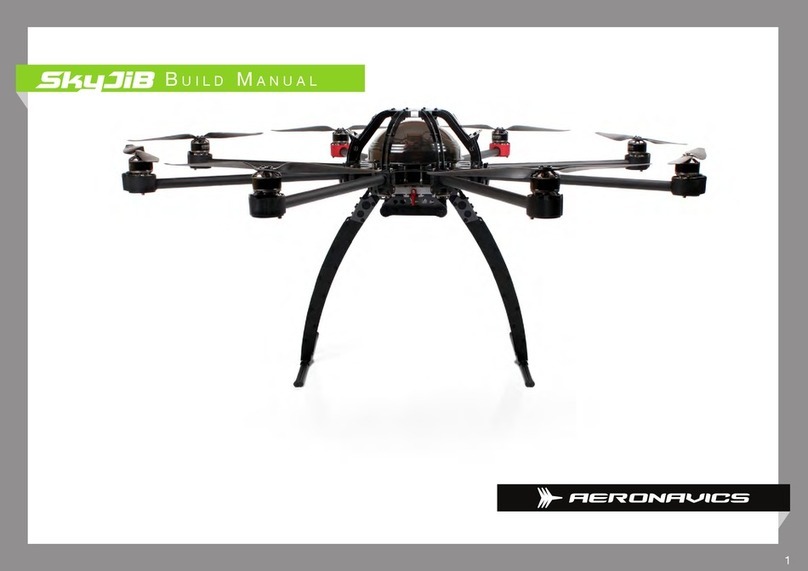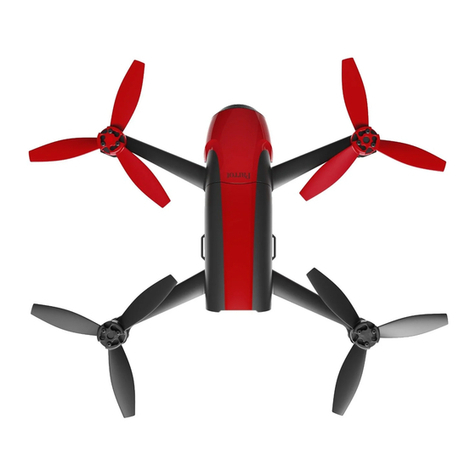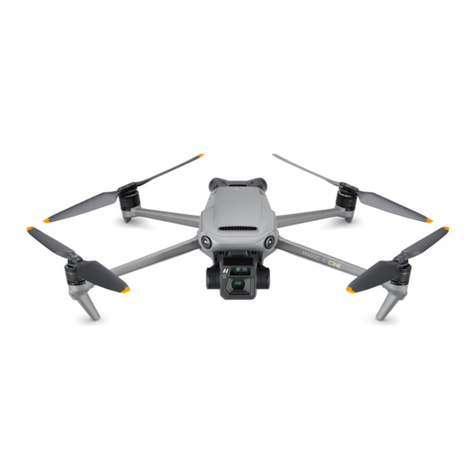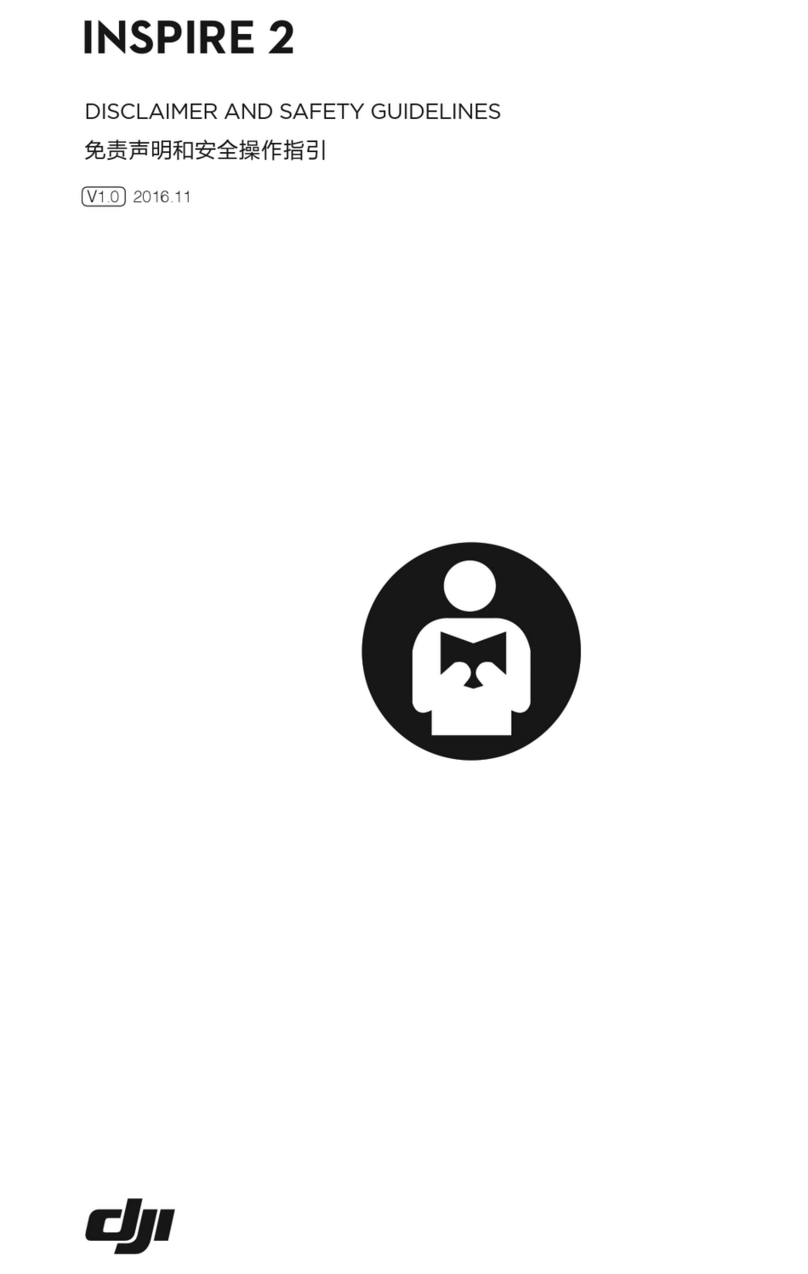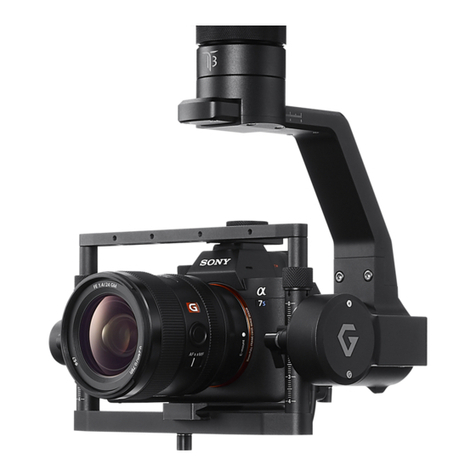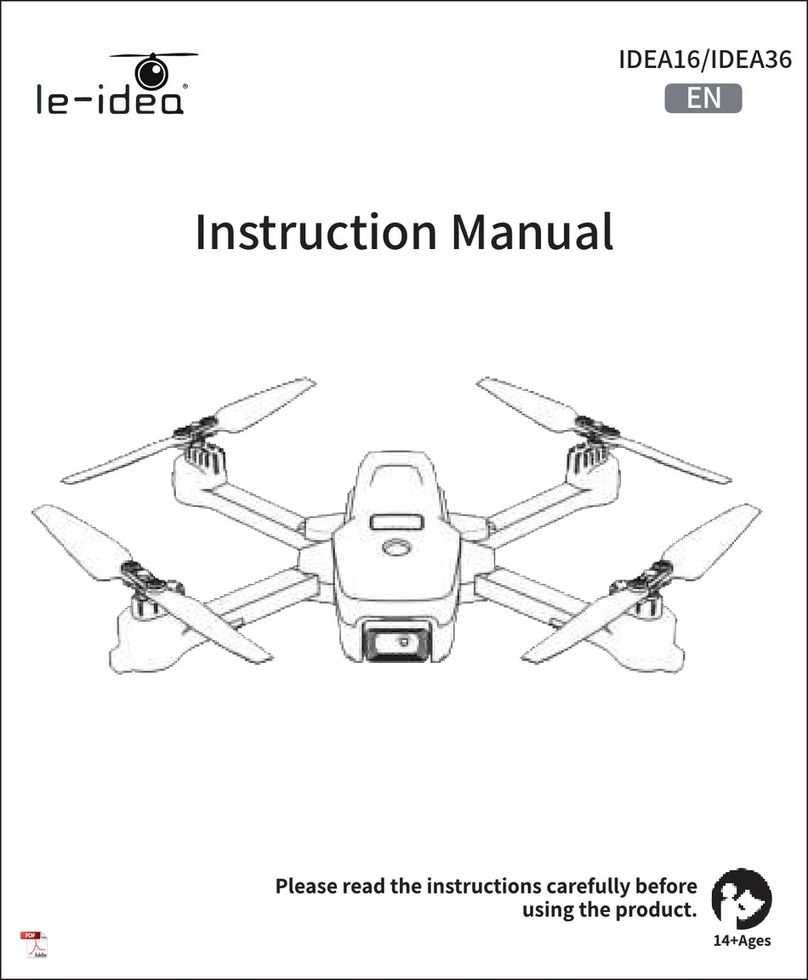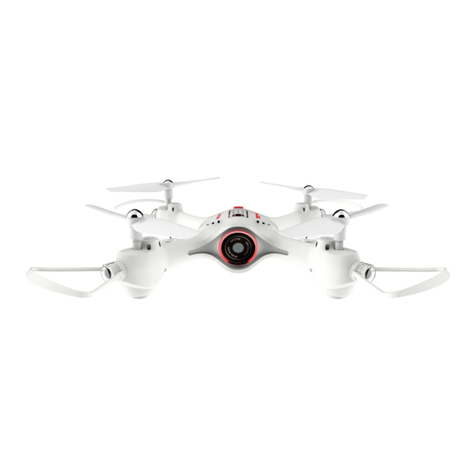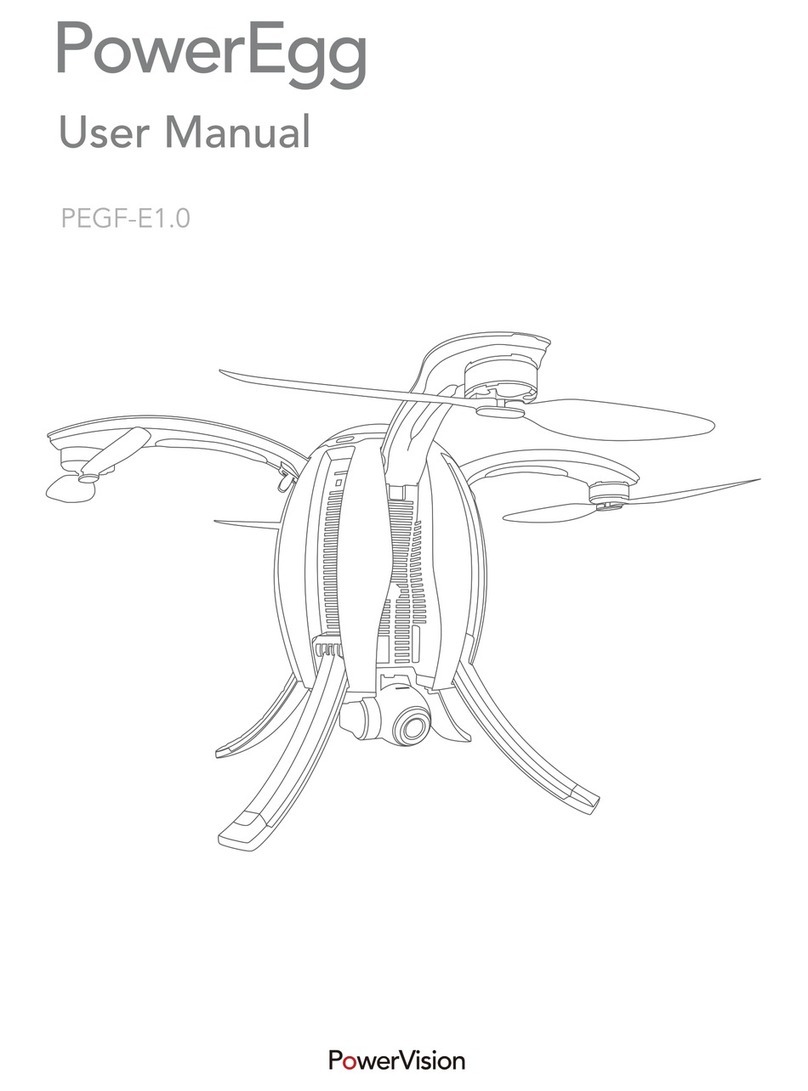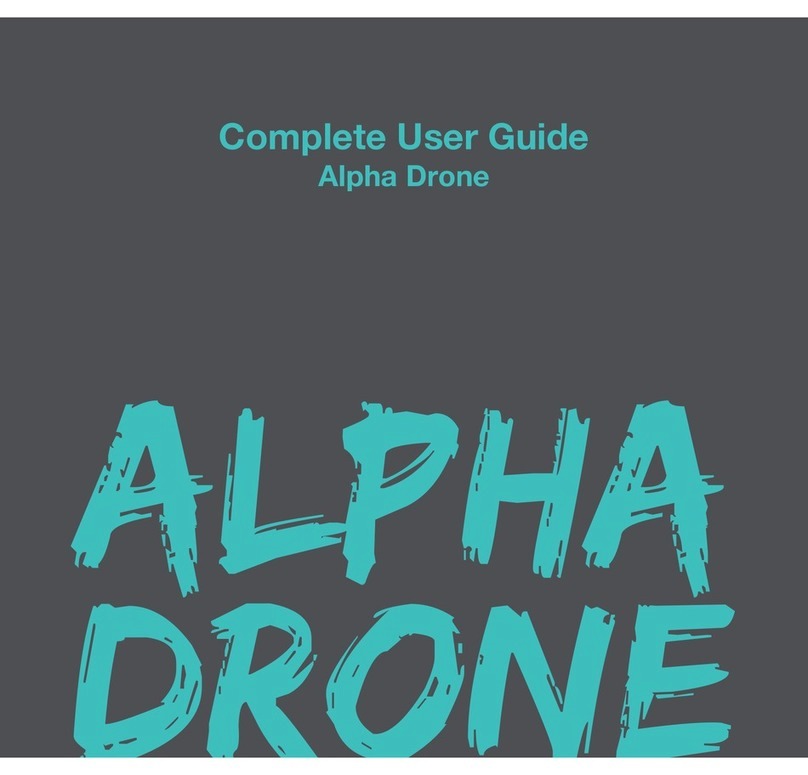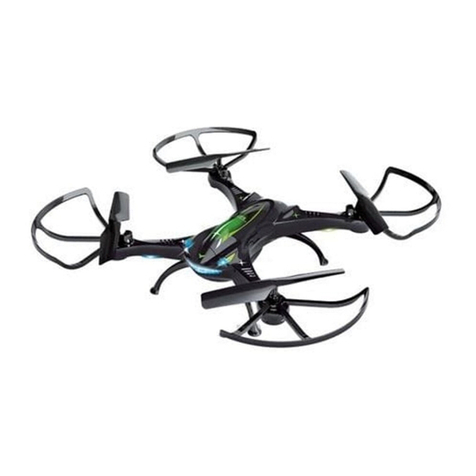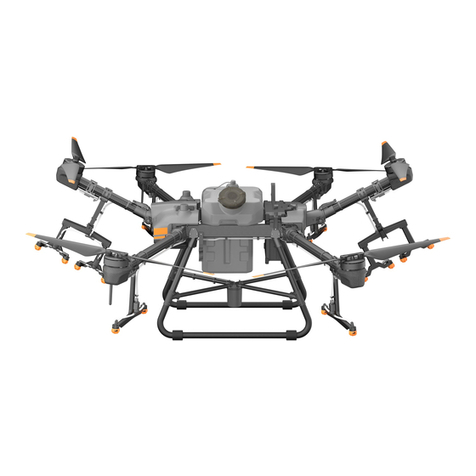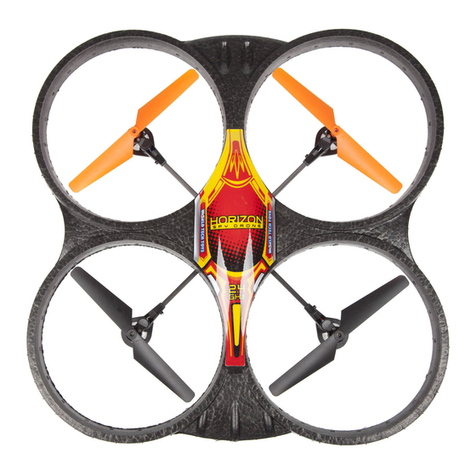Aeronavics XM Titanium Manual

1
Build M anual

2
Contents
31.0 FLIGHT OPERATION AND SAFETY
4 Operation and Safety
6 Pre-Flight Safety Check
7 Do’s and Dont’s
82.0 PRE-BUILD CHECKLIST
103.0 LANDING GEAR ASSEMBLY INSTRUCTIONS
11 StandardLandingGear
1 6 ExtendedLandingGear
20 4.0 GEAR RAIL ASSEMBLY
27 5.0 Center Plate and Boom Assembly Instructions
43 6.0 Main Component Assembly
48 7.0 Engine Mount Assembly
53 8.0 Dome Cover Assembly
56 9.0 Attaching the GPS Boom Mounting Plate ( Optional Extra )

3
Flight operation and saFety

4
operation and s aFety
This is a quick guide for those new to Multi-Rotor craft offering
some basic safety and operational procedures...and are
recommended standard operating procedures for those piloting
Aeronavics or any multi-rotor craft.
Please read the instructions for the relevant Flight Control
electronics before proceeding. Go to the web site of your ight
control system and make yourself well acquainted with the
correct procedure for the electronics installation and software
operation.
Caution: never connect and start the engines for the rst
time with the propellers attached....and always balance your
propellers; unbalanced propellers can cause excessive vibration
which may lead to material fatigue.
Note: check the orientation of the ight controller you are
using (which way is front) and also the engine assignment
conguration; for instance which is engine 1,2,3 etc. and check
also that your propellers, clockwise and counter clockwise, are
also installed correctly before your rst ight.
Before the rst ight hand test your craft – arm and calibrate
your electronics, hold the craft with both hands by the landing
gear skids above your head with the front facing away from, and
to the front of you, make sure you are well clear of obstructions
and other people. You may need the assistance of another
person for this test.
Raise the throttle to around 25% and gently move the craft
around the axis’ roll (tipping the craft left and right) and feel for
a steady and smooth resistance to your movements, do the
same for pitch (tipping the craft forward and backward) and
also yaw, rotating the craft clockwise and anti-clockwise whilst
keeping it horizontal. If the craft offers smooth resistance to
your movements it will y correctly.
Your rst test ight should be in an open eld in low or zero
wind. A sports eld (not currently in use) is a good option;
choose a site with short or mown grass. Do not takeoff from
dry dusty sites. Make sure any onlookers or spectators do not
gather about you…if so ask them to move away from you in a
perimeter not less than 50m (150 feet) diameter around you.

5
Make sure that you have fully charged your transmitter and
onboard battery packs. Make sure that the antenna of your
Radio (TX) is up and correctly positioned; make sure the receiver
(RX) for your craft is well positioned within the craft and secured
and that the antenna is facing downward and to the back of your
craft and not touching any part of the craft.
Place the craft on level ground and turn on your transmitter –
check that you have the correct model selected on your TX.
Set the transmitter timer to about 80% of the known ight
duration. Connect the battery to your crafts FC inputs and wait
for the engine controller beeps to stop.
Stand about 4m away from your craft and behind the craft with
the craft facing directly away from you.
Check the 50m ight safety perimeter you have established, also
checking behind you for children running in to see what you are
doing.
Survey the area; look for obstacles that you might not have seen
previously, like power-lines and overhead wires.
Never y your craft near a controlled aerodrome or in controlled
airspace.
Check the weather conditions, the wind speed and direction.
Do not y in gusty strong wind at any time. Always try and y
the craft with the wind at your back so the craft will drift directly
away from you.
Always keep your eyes on the craft when in ight – if people
approach you inside your safety perimeter to talk to you or to
ask questions whilst you are ying the craft do not engage in the
conversation and ask them to stand well clear of you until you
have landed.
Re-check your perimeter and raise the throttle slowly and
check to see if the craft wants to tilt to one direction or another;
sometimes you may need to adjust the trim on your TX to get
a level ight, however most times the craft will y perfectly rst
time if you have installed the electronics and the software has
been set correctly—check with the Flight Control manufacturer
for standard or beginner settings for the craft.
Takeoffs are sometimes easier with a short burst of power to
lift the craft off the ground. Hold the craft in a controlled hover
directly in front of you about 2-3m off the ground away from
“ground effect” prop wash. When you have mastered this hover
position you can then move on to rolling the craft gently from
side to side and forward and backward.
Make sure that you always stand behind the craft, this makes
for easy orientation of the ight controls. Repeat this exercise
several times before you take the craft any higher.
Always y the craft well away from people and / or property.
Always check for children nearby.

6
pr e - F light s aFety C h e C k
Thoroughly check the craft before every ight…
• Check to see if any wires have come off
•Check for loose bolts on the assembly
•Check that the battery’s are secure
•Check the battery voltage, and if you have more than one battery, check your spares too
•Check the propellers for marks and nicks
•Check the propeller nuts or bolts, make sure they are tight
•Check the engine mounts and the bolts and nuts for tightness
•Check the Transmitter battery voltage; never y the craft with a low voltage reading on your transmitter
(check with the manufacturer of your equipment for minimum and maximum voltage readings).
•Check that the transmitter antenna is not damaged.
•Check that the craft receiver module is well connected and that the antenna’s are properly positioned.
•Take a good look over the craft from all sides to make sure that nothing appears unusual or out of place.
•Check your ight perimeter.
•Check for power-lines and overhead obstacles.
•Assess the weather conditions, wind direction and speed. An anemometer (hand held wind speed meter) is a good tool
to have, otherwise use some dry grass or a tissue, throwing in the air to gauge the wind direction.
•Do not y in gusty and turbulent conditions.
•Set your transmitter timer to 80% of the known battery duration.
DISCLAIMER:
Aeronavics disclaims all warranties, whether express or implied, including but not limited to the implied warranties of merchantability and tness for a particular purpose. Aeronavics does not assume
any liability, whether direct or indirect, from the use of the XM Series Craft. Aeronavics shall not be liable for any direct, indirect, special, incidental, punitive, contingent or consequential damages to
persons or property caused by the XM craft. In no event shall Aeronavics be liable for personal injury up to and including death.

7
do’sand d ont’s:
•
Never y in strong wind – the operational safe wind speed for these craft is about 10-15 KPH.
•
In the event of a crash or a hard landing, always check the craft for damage before taking off again. In this instance, you must also
check that you do not have dirt or grit in the engines; this can cause an engine or engines to overheat and fail in ight resulting in an
out of control craft and serious damage or injury to the craft , other people and their property.
•
Your launch eld should preferably be open and at with short grass. If it is necessary to take off in a eld which only has long grass,
manually atten a 1.5m diameter take off perimeter with your feet.
•
Always have a ight plan – visualize your ight path and check again for obstacles.
•
Never y the craft out of direct line of sight and always keep your eyes on the craft whilst it is in the air.
•
Never y the craft above 400 feet in height (the length of a football eld).
•
Never y near people – A 50m (150 ft) perimeter around and above people is a recommended minimum and operational law in
most countries.
•
Always set your transmitter timer before each ight to about 80% of the known ight duration for the battery pack’s you have installed in the craft.
•
Never turn your transmitter off in ight.
•
First person view ights are against the law in some countries – check the relevant aviation safety authority in your country before ying FPV.
Always have a “spotter” with if you do y FPV.
•
Never let friends y your craft unless they are well schooled in the discipline.
•
Never y under the inuence of any substance or alcohol. Whilst there is a minimum blood alcohol level allowed for driving an
automobile in most countries, the law for pilots in command of ying craft around the globe is universal…there is a zero limit tolerance.
•
Always turn your transmitter on before connecting the battery to the craft...and always disconnect the battery from the craft before
turning your transmitter off.

8
pr e -Build C heCklist

9
M4 3mm Hex Screw Driver
M4 Hex Driver
3mm Phillips Head Driver
M3 2.5mm Hex Screw Driver
required t ools
M3 Hex Driver

10
as s e M B l y i nstruCtions

11
PART 1: LANDING GEAR ASSEMBLY – PARTS LIST STANDARD LANDING GEAR
1
4
2
2
4
2
1
1
4
Landing Gear Twin Skid End Cap
Landing Gear Skid
Spacer M3
Socket Head Cap Screw M3x8mm
Locking Washer M3
Socket Head Cap Screw M3x12mm
Socket Head Cap Screw M3x20mm
Nyloc Nut M3 SS
4
4
14 (1)
22 (2)
6 (2)
14 (2)
2 (1)
4 (2)
Landing Gear Mounting Bracket
Landing Gear Plate Standard Twin
Landing Gear Brace Plate
Battery Strap
Battery Mounting Pad
Battery Strap Keeper
M3 QR Mounting Bracket - Male
M3 QR Mounting Bracket - Female
Landing Gear Twin Skid Foot Clip
Parts + SparesParts + Spares
1406-0190
1406-0200
1506-0021
2503-0030
2504-0030
2506-0020
2506-0030
2506-0170
Product Code Product Code
1404-0064
1404-0111
1404-0151
1406-0060
1406-0090
1406-0100
1406-0170
1406-0160
1406-0180

12
Bend the Brace Plate to t
the Landing Gear Plate slots.
Place second Landing Gear
Plate on top...
1
...and afx using two M3x8mm Socket
Head Cap Screws as shown in the
picture below.
2
3
X2
X1
X1
X8
X4
STANDARD LANDING GEAR
X2
X2
X1
Firstly attach two of the 50mm Spacers
using the M3x8mm Socket Head Cap
Scews as shown here.
Repeat steps 1-3 for the second half of
your Landing Gear .
Afx another two Spacers with
M3x8mm Socket Head Cap Screws as
shown in the picture below.
X4
X2
4

13
5
Attach the rubber Skid End Caps onto your
Twin Skids, center and snap in place.
Attach your Twin Skid Foot Clip using a Spacer
and M3x12mm Socket Head Cap Screws.
7
The two halves tted to the Landing
Gear Bracket should look like this.
6
X4
X4
X2
X4
X4
STANDARD LANDING GEAR
Now attach your Landing Gear
bracket using 2 Spacers per side and
M3x12mm Socket Head Cap Screws.
Repeat this step for the second half of
the Landing Gear.
X8
X1 X4
8

14
9
Attach the male part of the clip onto the
Landing Gear Mounting Bracket (using
M3x8mm and SS Nyloc Nuts), ensuring it will
slide onto the craft from left to right.
x4
x4
STANDARD LANDING GEAR
Hot glue the Rubber Battery Pads to your Landing
Gear Plates and clip on the Battery Strap Keeper
as shown below.
10
x4
x2

15
11
STANDARD LANDING GEAR
Attach the Battery Straps, feed the Strap
behind both alloy spaces and through the
Battery Strap Keeper and your Landing
Gear should now look like this:

16
PART 1: LANDING GEAR ASSEMBLY – PARTS LIST EXTENDED LANDING GEAR
1
4
2
2
4
2
1
1
4
Landing Gear Twin Skid End Cap
Landing Gear Skid
Spacer M3
Socket Head Cap Screw M3x8mm
Locking Washer M3
Socket Head Cap Screw M3x12mm
Socket Head Cap Screw M3x20mm
Nyloc Nut M3 SS
4
4
18
30
6
14
3
4
Landing Gear Mounting Bracket
Landing Gear Plate Ext Twin
Landing Gear Brace Plate
Battery Strap
Battery Mounting Pad
Battery Strap Keeper
M3 QR Mounting Bracket - Male
M3 QR Mounting Bracket - Female
Landing Gear Twin Skid Foot Clip
Parts + SparesParts + Spares
1406-0190
1406-0210
1506-0021
2503-0030
2504-0030
2506-0020
2506-0030
2506-0170
Product Code Product Code
1404-0064
1404-0102
1404-0162
1406-0060
1406-0090
1406-0100
1406-0170
1406-0160
1406-0180
(1)
(2)
(2)
(2)
(2)

17
Attach one more Spacer on the outside
of the brace plate and another one on the
inside as shown below, using M3x8mm
Socket Head Cap Screws.
1
X1
X1
...and afx using four M3x8mm Socket
Head Cap Screws as shown in the
picture below.
2
3
X4
X4
X2
EXTENDED LANDING GEAR
Bend the Brace Plate to t the Landing Gear
Plate slots. Place second Landing Gear
Plate on top...
Firstly attach four of the 50mm Spacers using the
M3x8mm Socket Head Cap Scews as shown here.
X4
X4
X1
4Repeat steps 1-3 for the second half of your Landing Gear.

18
65
EXTENDED LANDING GEAR
Attach your Twin Skid Foot Clips to the Landing Gear using
a Spacer and M3x12mm Socket Head Cap Screws. Attach
the rubber Skid End Caps onto your Twin Skids, center and
snap in place.
X4
X4
X2
X2
X2
Attach the male part of the clip onto the Landing Gear
Mounting Bracket, ensuring it will slide onto the craft from
left to right using M3x8mm and SS Nyloc Nuts.
x4
x4

19
Hot glue the Rubber Battery Pads to
your Landing Gear Plates and clip on the
Battery Strap Keeper as shown below.
9
x4
x2
EXTENDED LANDING GEAR
Now attach your Landing Gear bracket using 2 Spacers per side
and M3x12mm Socket Head Cap Screws. Repeat this step for
the second half of the Landing Gear.
X8
X1 X4
8
7
The two halves tted to the Landing Gear Bracket
should look like this.

20
10
EXTENDED LANDING GEAR
Attach the Battery Straps, feed the Strap
behind both alloy spacers and through the
Battery Strap Keeper and your Landing
Gear should now look like this:
Table of contents
Other Aeronavics Drone manuals
